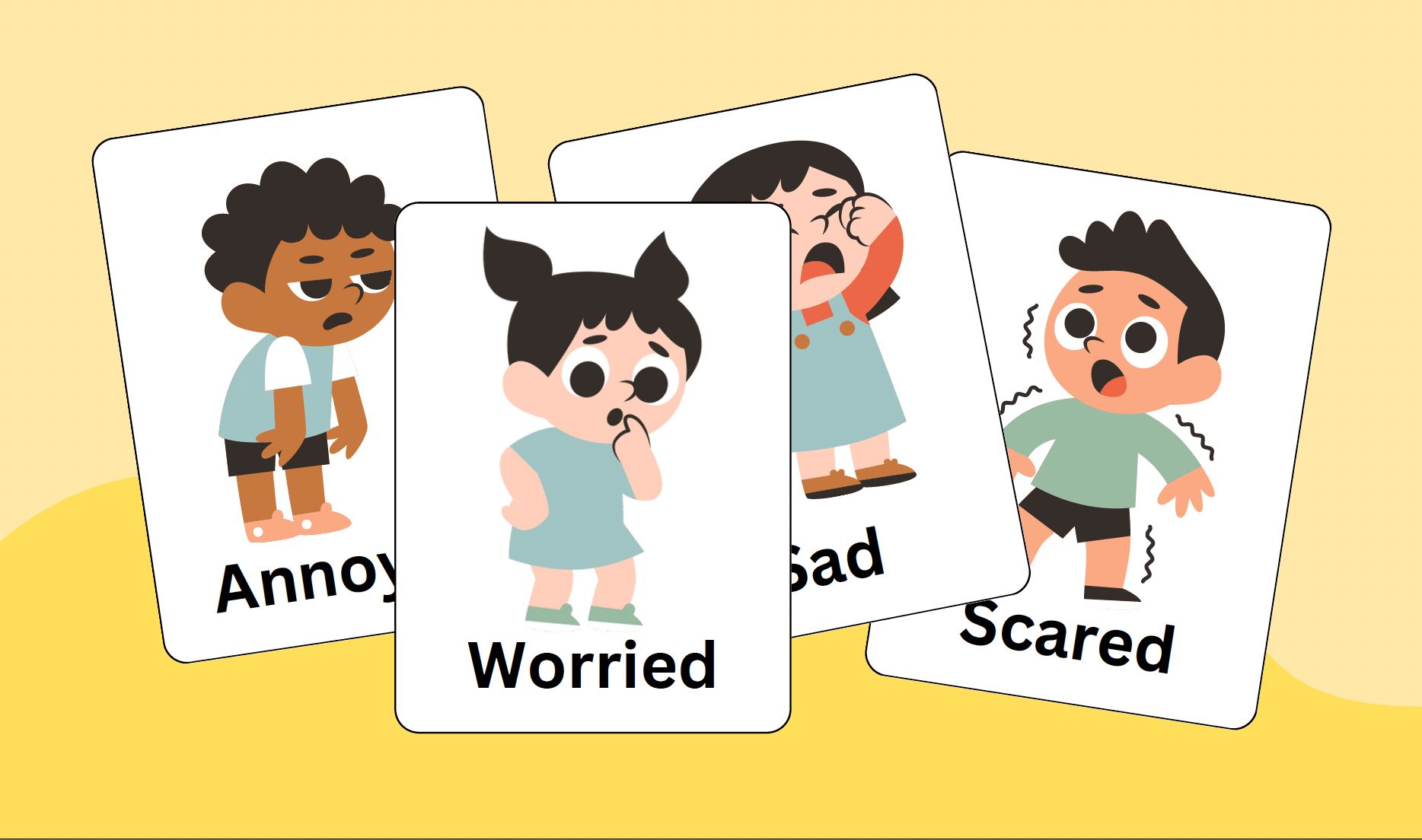Developing Emotional Intelligence in Children: 5 Effective Activities for Parents and Caregivers
Emotional intelligence is a crucial skill that begins developing in early childhood. Research shows children with strong emotional intelligence can express their feelings more effectively, leading to clearer communication and healthier relationships. For parents and caregivers, these skills provide valuable insight into children's emotions and needs, creating stronger family bonds.
The benefits of emotional intelligence extend far beyond childhood. Children who develop these skills early often demonstrate:
Improved academic performance
Better conflict resolution abilities
Stronger relationship-building skills
Enhanced teamwork and collaboration
Greater resilience when facing challenges
This guide shares five research-backed strategies to help your child identify, understand, and express their emotions in healthy ways.
Strategy 1: Emotions Head's Up Game
Difficulty level: Easy | Time required: 15-20 minutes | Ages: 3-10
Help your child practice identifying emotions with this simple, interactive game that makes learning fun while building crucial recognition skills.
How to Play:
Print the emotion cards (available in downloadable PDF)
Place cards face down in a pile
Take turns holding a card to your forehead (without peeking)
Other players mimic the emotion while you guess
For deeper learning, share personal experiences with each emotion
This activity helps children recognize facial expressions, understand how emotions look on different people, and practice expressing feelings safely.
Strategy 2: High/Low Daily Check-Ins
Difficulty level: Easy | Time required: 5-10 minutes daily | Ages: All ages
Building emotional intelligence requires consistent practice in a supportive environment. This simple daily routine creates space for the whole family to share feelings.
How to Implement:
Gather as a family each day (dinner time works well)
Each person shares their day's highlight and low point
Include the emotion connected to each experience
Parents should model first, demonstrating vulnerability
Use phrases like "I felt unimportant when..." or "I felt proud because..."
This practice normalizes emotional expression and teaches children that all feelings are acceptable to discuss.
Strategy 3: Emotion Wheel Navigation
Difficulty level: Medium | Time required: 10-15 minutes | Ages: 5+
Expand your child's emotional vocabulary beyond basic feelings with this visual tool that helps identify nuanced emotions.
How to Use:
Start with the six core emotions in the wheel's center
Help your child identify which primary emotion they're feeling
Move outward to explore more specific emotions within that family
Practice naming complex emotions during calm moments
Use apps like "Emotional Feeling" for digital exploration
This approach teaches children that emotions exist in families and helps them develop precision when expressing their feelings.
Strategy 4: Emotional Target Practice
Difficulty level: Easy | Time required: 15-20 minutes | Ages: 4-10
Combine physical activity with emotional learning in this engaging game that helps process feelings while having fun.
How to Play:
Tape emotion cards to a door or wall
Take turns shooting with a Nerf gun or tossing bean bags
When you hit an emotion, share a time you felt that way
Parents should participate and model comfort with all emotions
Discuss different situations that might trigger similar feelings
This activity is particularly effective for children who struggle with sitting still during conversations about emotions.
Strategy 5: Emotional Storytelling
Difficulty level: Medium | Time required: 15-30 minutes | Ages: 3+
Stories provide a safe way to explore complex emotions through characters, helping children build empathy and emotional awareness.
How to Implement:
Choose books featuring characters experiencing various emotions
While reading, pause to discuss how characters might be feeling
Ask questions like "How do you think they feel right now?" and "How can you tell?"
Connect story situations to your child's experiences
Create simple stories featuring your child handling emotional situations
This strategy helps children recognize emotional cues in others and practice perspective-taking.
Conclusion
Developing emotional intelligence is one of the most valuable gifts you can give your child. These five strategies offer practical, enjoyable ways to strengthen these skills through everyday activities. Remember that emotional intelligence grows through consistent practice and modeling in a safe, supportive environment.
As children develop these skills, they'll be better equipped to navigate social relationships, academic challenges, and future workplace environments with confidence and empathy.
This guide is provided for educational purposes only and is not intended as therapeutic advice. Please consult with a licensed mental health professional for concerns about your child's emotional development.






